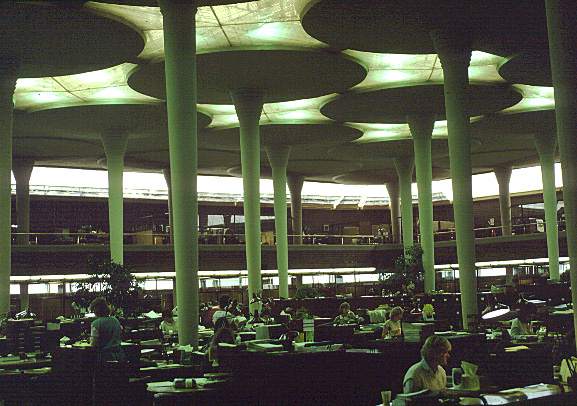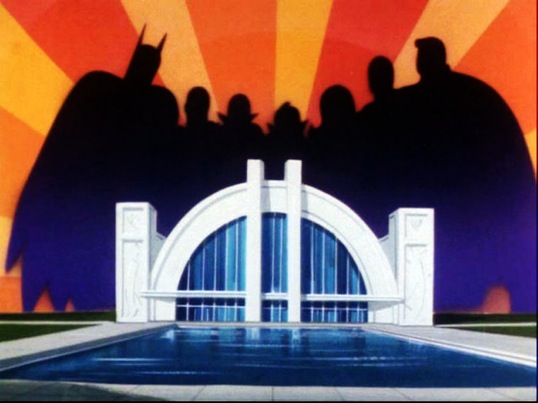Archive for the ‘Technology’ Category
Creative Problem Creation
 Problems get a bad rap. We’re all clear on the negativity around problems, but we don’t appreciate their positive character. It’s time we use their powers for good.
Problems get a bad rap. We’re all clear on the negativity around problems, but we don’t appreciate their positive character. It’s time we use their powers for good.
One of the least popular characteristics of problems is their selfishness. Like the friend who shows up for dinner unannounced, problems, left to their own, care only about their calendar. But to overcome this shortcoming and harness their energy, we can create them to fit our time table.
An important strong suit of problems is their ability to create focus. When the VP has a problem, everybody has a problem. And it’s this persuasive power of problems that focuses the organization on a solution – resources, alignment, and creativity on demand.
I propose we bring problems to life on our own terms to create new thinking; to creatively fabricate problems to generate laser-focused thinking in the direction of our choice; to imagine what could be and create the right problems to get us there. Creativity on demand.
The most provocative and productive problems to manufacture are those that remove inherent goodness of your products or that outlaw their physical fundamentals. Like putting your thumb over a hose, these problems spray high velocity thinking in unpredictable directions. Here are some examples:
- Big coffee pot can make only one cup – single-cup brewer industry.
- Speedboats cannot carry multiple passengers – personal water craft industry.
- Lights must illuminate only a small area – LED proliferation.
- Sturdy running shoes must be floppy – bare foot running shoe movement.
- Desktop computers must be mobile – laptop industry.
- Stiff, wear-like-iron dungarees must be worn out – faded/distressed jean movement.
- Eye glasses cannot rest on the nose – contact lenses.
- Pencils cannot be sharpened – mechanical pencils.
- Laser printers must be slow – home printer industry.
Sure, these examples were reverse engineered. But take a minute to walk back in time and sit in those industries. What if back then you created those problems for yourself? What if you create them tomorrow?
The thinking in the post is strongly shaped by Jeffrey Paul Baumgartner’s Anti Conventional Thinking (ACT).
Mindset for Doing New
 The more work I do with innovation, the more I believe mindset is the most important thing. Here’s what I believe:
The more work I do with innovation, the more I believe mindset is the most important thing. Here’s what I believe:
Doing new doesn’t take a lot of time; it’s getting your mind ready that takes time.
Engineers must get over their fear of doing new.
Without a problem there can be no newness.
Problem definition is the most important part of problem solving.
If you believe it can work or it can’t, you’re right.
Activity is different from progress.
Thinking is progress.
In short, I believe state-of-the-art is limited by state-of-mind.
The Dark Art of Uncertainty
 Engineers hate uncertainty. (More precisely, it scares us to death.) And our role in the company is to snuff it out at every turn, or so we think.
Engineers hate uncertainty. (More precisely, it scares us to death.) And our role in the company is to snuff it out at every turn, or so we think.
To shield ourselves from uncertainty, we take refuge in our analyses. We create intricate computer wizardry to calm our soles. We tell ourselves our analytic powers can stand toe-to-toe with uncertainty. Though too afraid to admit, at the deepest level we know the magic of our analytics can’t dispatch uncertainty. Like He-Who-Should-Not-Should-Be-Named, uncertainty is ever-present and all-powerful. And he last thing we want is to call it by name.
Our best feint is to kill uncertainty before it festers. As soon as uncertainty is birthed, we try slay it with our guttural chant “It won’t work, it won’t work, it won’t work”. Like Dementors, we drain peace, hope, and happiness out of the air around a new idea. We suck out every good feeling and reduce it to something like itself, but soulless. We feed on it until we’re left with nothing but the worst of the idea.1
Insidiously, we conjure premonitions of mythical problems and predict off-axis maladies. And then we cast hexes on innovators when they don’t have answers to our irrelevant quandaries.
But our unnatural bias against uncertainty is misplaced. Without uncertainty there is no learning. Luckily, there are contrivances to battle the dark art of uncertainty.
When the engineering warlocks start their magic, ask them to be specific about their premonitions. Demand they define the problem narrowly – between two elements of the best embodiment; demand they describe the physical mechanisms behind the problem (warlocks are no match for physics); demand they define the problem narrowly in time – when the system spools up, when it slows down, just before it gets hot, right after it cools down. What the warlocks quickly learn is the problem is not the uncertainty around the new idea; the problem is the uncertainty of their knowledge. After several clashes with the talisman of physics, they take off their funny pointy hats, put away their wands, and start contributing in a constructive way. They’re now in the right frame of mind to obsolete their best work
Uncertainty is not bad. Denying it exists is bad, and pretending we can eliminate it is bad. It’s time to demonstrate Potter-like behavior and name what others dare not name.
Uncertainty, Uncertainty, Uncertainty.
Amplify The Social Benefits of Your Products
To do g ood for the planet and make lots of money (or the other way around), I think companies should shift from an economic framework to a social one. Green products are a good example. Facts are facts: today, as we define cost, green products cost more; burning fossil fuel is the lowest cost way to produce electricity and move stuff around (people, products, raw material). Green products are more expensive and do less, yet they sell. But the economic benefits don’t sell, the social ones do. Lower performance and higher costs of green products should be viewed not as weaknesses, but as strengths.
ood for the planet and make lots of money (or the other way around), I think companies should shift from an economic framework to a social one. Green products are a good example. Facts are facts: today, as we define cost, green products cost more; burning fossil fuel is the lowest cost way to produce electricity and move stuff around (people, products, raw material). Green products are more expensive and do less, yet they sell. But the economic benefits don’t sell, the social ones do. Lower performance and higher costs of green products should be viewed not as weaknesses, but as strengths.
Green technologies are immature and expensive, but there’s no questions they’re the future. Green products will create new markets, and companies that create new markets will dominate them. The first sales of expensive green products are made by those who can afford them; they put their money where their mouths are and pay more for less to make a social statement. In that way, the shortcoming of the product amplifies the social statement. It’s clear the product was purchased for the good of others, not solely for the goodness of the product itself. The sentiment goes like this: This product is more expensive, but I think the planet is worth my investment. I’m going to buy, and feel good doing it.
The Prius is a good example. While its environmental benefits can be debated, it clearly does not drive as well as other cars (handling, acceleration, breaking). Yet people buy them. People buy them because that funny shape is mapped to a social statement: I care about the environment. Prius generates a signal: I care enough about the planet to put my money where my mouth is. It’s a social statement. I propose companies use a similar social framework to create new markets with green products that do less, cost more, and overtly signal their undeniable social benefit. (To be clear, the product should undeniably make the planet happy.)
The company that creates a new market owns it. (At least it’s theirs to lose). Early sales impregnate the brand with the green product’s important social statement, and the new market becomes the brand and its social statement. And more than that, early sales enable the company to work out the bugs, allow the technology to mature, and yield lower costs. Lower costs enable a cost effective market build-out.
Don’t shy away from performance gaps of green technologies, embrace them; acknowledge them to amplify the social benefit. Don’t shy away from a high price, embrace it; acknowledge the investment to amplify the social benefit. Be truthful about performance gaps, price it high, and proudly do good for the planet.
The Supreme Court of Technology
 The Founding Fathers got it right with three branches: legislative to make laws; judicial to interpret laws; and executive to enforce them. Back then it was all about laws, and the system worked.
The Founding Fathers got it right with three branches: legislative to make laws; judicial to interpret laws; and executive to enforce them. Back then it was all about laws, and the system worked.
What the Founding Fathers could not realize was there was a powerful, pre-chrysalis force more powerful than laws, whose metamorphosis would exploit a gap in the three branch system. Technology has become a force more powerful than laws, and needs its own branch of government. We need a Supreme Court of Technology. (Think Ph.D. instead of J.D.)
Technology is the underpinning of a sustainable economy, an economy where citizens are well-educated, healthy, and happy, and where infrastructure is safe and supports the citizens’ needs. For countries that have it, technology generates the wealth to pay for education, healthcare, and bridges. Back then it was laws; today it’s technology.
The Founding Fathers knew interpretation of laws demanded consistency, consistency that transcended the election cycle, and, with its lifetime appointment, the Supreme Court was the mechanism. And it’s the same with technology: technology demands consistency of direction and consistency of purpose, and for that reason I propose a Supreme Court of Technology.
The Chief Justice of Technology and her Associate Justices set the long term technology policy for the country. They can be derided for its long time horizon, but they cannot be ousted for making the right decisions or their consistency of purpose. The Justices decide how to best spend their annual budget, which is substantial and adjusts with inflation and population. Since they are appointed for life, the Justices tell Congress how it goes with technology (and to stop with all this gridlock gamesmanship) and ask the President for her plan to implement the country’s technology policy. (Technology transcends political parties and election cycles.)
With the Supreme Court of Technology appointed and their first technology plan in place (think environment and energy), the country is on track to generate wealth sufficient to build the best educational system in the world (think creativity, art, science, math, and problem solving) to fuel the next generation of technology leadership.
Marinate yourself in scarcity to create new thinking
 There’s agreement: new thinking is needed for innovation. And for those that have tried, there’s agreement that it’s hard. It’s hard to create new thinking, to let go of what is, to see the same old things as new, to see resources where others see nothing. But there are some tricks to force new thinking, to help squeeze it out of ourselves.
There’s agreement: new thinking is needed for innovation. And for those that have tried, there’s agreement that it’s hard. It’s hard to create new thinking, to let go of what is, to see the same old things as new, to see resources where others see nothing. But there are some tricks to force new thinking, to help squeeze it out of ourselves.
The answer, in a word, is scarcity.
In the developing world there is scarcity of everything: food, shelter, electricity, tools, education; in the developed world we must fabricate it. We must dust off the long-neglected thought experiment, and sit ourselves in self-made scarcity.
Try a thought experiment that creates scarcity in time. Get the band together and ask them this question: If you had only two weeks to develop the next generation product, what would you do? When they say the question is ridiculous, agree with them. Tell them that’s the point. When they try to distract and derail, hold them to it. Don’t let them off the hook. Scarcity in time will force them to look at everything as a resource, even the user and the environment itself (sunlight, air, wind, gravity, time), or even trash or byproduct from something in the vicinity. At first pass, these misused resources may seem limited, but with deeper inspection, they may turn out to be better than the ones used today. The band will surprise themselves with what they come up with.
Next, try a thought experiment that creates scarcity of goodness. Get the band back together, and take away the major performance attribute of your product (the very reason customers buy); decree the new product must perform poorly. If fast is better, the new one must be slow; if stiff is better, the new one must be floppy; if big, think small. This forces the band to see strength as weakness, forces them to identify and release implicit constraints that have never been named. Once the bizarro-world product takes shape, the group will have a wonderful set of new ideas. (The new product won’t perform poorly, it will have novel functionality based on the twisted reality of the thought experiment.)
Innovation requires new thinking, and new thinking is easier when there’s scarcity – no constraints, no benchmarks, no core to preserve and protect. But without real scarcity, it’s difficult to think that way. Use the time-tested thought experiment to marinate yourself in scarcity, and see what comes of it.
How to help engineers do new.
 Creating new products that provide a useful function is hard, and insuring they function day-in and day-out is harder. Plain and simple, engineering is hard.
Creating new products that provide a useful function is hard, and insuring they function day-in and day-out is harder. Plain and simple, engineering is hard.
Planes must fly, cars must steer, and Velcro must stick. But, at every turn, there are risks, reasons why a new design won’t work, and it’s the engineer’s job to make the design insensitive to these risks. (Called reducing signal to noise ratio in some circles.) At a fundamental level engineering is about safety, and at a higher level it’s about sales – no function, no sales.
That’s why at every opportunity engineers reduce risk . (And thank goodness we do.) It makes sense that we’re the ones that think things through to the smallest detail, that can’t move on until we have the answer, that ask odd questions that seem irrelevant. It all makes sense since we’re the ones responsible if the risks become reality. We’re the ones that bear ultimate responsibility for product function and safety, and, thankfully, it shapes us.
But there’s a dark side to this risk reduction mindset – where we block our thinking, where we don’t try something new because of problems we think we may have, problems we don’t have yet. The cause of this innovation-limiting behavior: problem broadening, where we apply a thick layer of problem over the entirety of a new concept, and declare it unworkable. Truth is, we don’t understand things well enough to make that declaration, but, in a knee-jerk way, we misapply our natural risk reduction mindset. Clearly, problems exist when doing new, but real problems are not broad, real problems are not like peanut butter and jelly spread evenly across the whole sandwich. Real problems are narrow; real problems are localized, like getting a drip of jelly on your new shirt.
How to get the best of both worlds? How to embrace the risk reduction mindset so products are safe and help engineering folks to try something radically new? To innovate?
We’ve got the risk reduction world covered, so it’s all about enhancing the try-something-new side. To do this we need to combat problem broadening; we need a process for problem narrowing. With problem narrowing, engineers drill down until the problem is defined as the interaction of two elements (the jelly and your shirt), defined in space (the front of your shirt) and time (when the knife drops a dollop on your shirt). Where problem broadening tells us to avoid making peanut butter and jelly sandwiches altogether (those sandwiches will always dirty our shirts), problem narrowing tells use to put something between the knife and the front of your shirt, or to put on your new shirt after you make your sandwich, or to do something creative to keep the jelly away from our shirt.
Problems narrow as knowledge deepens. Work through your fears, try something new, and advance your knowledge. Then define your problems narrowly, and solve them.
Innovate.
The Voice of Technology
 We’ve all done Voice of the Customer (VOC) work, where we jump on a plane, visit our largest customers, and ask leading questions. Under the guise of learning it’s mostly a mechanism to justify what we already want to do, to justify the products we know want to launch. (VOC should stand for Validate Our Choices.)
We’ve all done Voice of the Customer (VOC) work, where we jump on a plane, visit our largest customers, and ask leading questions. Under the guise of learning it’s mostly a mechanism to justify what we already want to do, to justify the products we know want to launch. (VOC should stand for Validate Our Choices.)
It’s a waste of time to ask customers for the next big thing or get their thoughts on a radical technology. First off, it’s not their job to know the next big thing, it’s ours. The next big thing is bigger than their imagination, never mind what they do today. (That’s why it’s called the next big thing.) And if we wait for customers tell us the next big thing, we’re hosed. (Their time horizon is too short and ours is shorter.) In this case it’s best to declare failure; our competitors figured it out a long time ago (they didn’t wait for the customer) and are weeks from commercialization. We should get busy on the next, next big thing because we’ve already missed this next generation. Next time we’ll silence the voice of the customer (VOC) and listen to the voice of the technology (VOT).
As far as radical technology, if we wait for customers to understand the technology, it’s not radical. Radical means radical, it means game-changing, a change so radical it obsoletes business models and creates unrecognizable, ultra-profitable, new ones. That’s radical. If we don’t start technical work until our customers understand the new technology, it’s no longer radical, and our competitors have already cornered the market. Again, we’ve missed an entire generation. Next time we’ll silence the voice of the customer (VOC) and listen to the voice of the technology (VOT).
Technology has a life force; it has a direction; it knows what it wants to be when it grows up. It has a voice. Independent of customer, it knows where it wants to go and how it will get there. At the highest level it has character traits and preferred paths, a kind of evolutionary inevitability; this is the voice of technology (VOT).
Technology will evolve to complete itself; it will move toward natural periodicity among its elements; it will harmonize itself; it will become more controllable; it will shorten its neural flow paths; it will do yoga to improve its flexibility; its feet will grow too fast and create adolescent imbalance; it will replicate into multiples selves; it will shrink itself; it will improve its own DNA. This is VOT.
Technology cannot tell us its lower-level embodiments (we control that), but it does sing hymns of its high-level wants and desires, and we must listen. No need to wait for VOC, it’s time to listen to VOT.
Like a dog whistle, technologists can hear VOT while others cannot. We understand the genetics of technology and we understand its desires (because we understand its physics.) We can look back to its ancestors, see its trajectory of natural evolution, and predict attributes of its offspring. Before everyone else, we see what will be.
Next time, instead of VOC, ask your technologists what the voice of technology is saying, and listen.
The two parts of innovation
 Innovation has two parts: ideation and commercialization. Ideation, the first part, is all about ideas, and this the part of innovation that comes to mind when we think of innovation. Commercialization, the second part, is all about products. This is the part we don’t think of, and this is the part we’ve got to do better.
Innovation has two parts: ideation and commercialization. Ideation, the first part, is all about ideas, and this the part of innovation that comes to mind when we think of innovation. Commercialization, the second part, is all about products. This is the part we don’t think of, and this is the part we’ve got to do better.
Ideation happens readily, and it happens at the whiteboard, that mystical device that can focus the universe’s creativity onto a 3 foot buy 4 foot sheet. In front of the whiteboard it’s exciting, fast, frenzied; ideas jump directly from ether to whiteboard, and we are only the unconscious conduits. With a dry erase marker in each hand and several other colors at the ready, markers fly about as if guided by a spiritual force; flow charts magically appear with all the blocks and all the right arrows; shirt sleeves are used as erasers to keep up with the flow of ideas. This is what comes to mind when we think about innovation. But this is the easy part. Fact is, we already have enough good ideas, and what we need is better execution, better commercialization.
Commercialization is a different game altogether. Once ideas are created and documented in and understandable way, the real work, the difficult work, begins. The biggest fundamental challenge is how to choose between a recently invented whiteboard idea (with no revenue stream) and a modification of something that sells today (with an existing revenue stream). Traditional net present value techniques aren’t the right answer because they always favor improvements of the existing stuff, and any ranking process must guess at future sales for the whiteboard idea, and guesses are not sufficient to carry the day. It’s a tough road, and a detour may be in order.
As advocate for the whiteboard ideas, choose the path less traveled, take the detour. Figure out where the company wants to go, understand the destination. Then, review all the non-whiteboard ideas, the improvements to existing stuff, and see if those ideas, on their own, can get the company to its new destination. It’s my bet they cannot, that there will be gaps. (But if they can, the whiteboard ideas are dead in the water.) With gaps defined, there is now a rationale, now a reason, to believe in the whiteboard ideas. Finally, some leverage.
Staring with the gap analysis, sprinkle in the best whiteboard ideas, and see what it looks like, see where the ideas could take the company. My bet is the picture looks better with the whiteboard ideas in the mix; my bet is there will now be plausible scenarios where the company can achieve its desired future state. (Plausible scenarios may not sound like much, but they’re a whole lot better than knowing you won’t make it). And once company leaders see how the whiteboard ideas improve the situation, some may get sufficiently jazzed to swap out a few more of the improve-the-old-stuff ideas for more whiteboard ideas.
It’s extremely difficult to challenge the status quo, to go head-to-head with existing revenue streams, but that’s exactly what whiteboard ideas must do. To carry the day, company leaders must say yes to whiteboard ideas at the expense of improve-the-old-stuff ideas. That’s a particularly difficult hurdle since business unit leaders are judged on hitting their numbers (thankfully). The upside of moving the company closer to its desired future state must outweigh the downside of saying no to investments in predictable revenue streams. Let’s be clear, this can only be an emotional decision.
With allocation of resources, the whiteboard idea is off and running, though not home free. It will be continually challenged by the established business units, who, at every turn, will ask to judge the whiteboard idea using improve-the-old-stuff criteria. Talk about the gap analysis where possible.
I’ve found ideation far more fun than commercialization, and commercialization far more difficult than ideation. But like peanut butter and jelly or Oreos and milk, neither has meaning without the other. We’ve got the ideation stuff down, but our execution/commercialization stuff needs serious work.
Though not glamorous, we’ve got to improve the commercialization element of innovation if we are to realize more of its benefits.
It’s all about judgement.
 It’s high tide for innovation – innovate, innovate, innovate. Do it now; bring together the experts; hold an off-site brainstorm session; generate 106 ideas. Fast and easy; anyone can do that. Now the hard part: choose the projects to work on. Say no to most and yes to a few. Choose and execute.
It’s high tide for innovation – innovate, innovate, innovate. Do it now; bring together the experts; hold an off-site brainstorm session; generate 106 ideas. Fast and easy; anyone can do that. Now the hard part: choose the projects to work on. Say no to most and yes to a few. Choose and execute.
To choose we use processes to rank and prioritize; we assign scores 1-5 on multiple dimensions and multiply. Highest is best, pull the trigger, and go. Right? (Only if it was that easy.) Not how it goes.
After the first round of scoring we hold a never-ending series of debates over the rankings; we replace 5s with 3s and re-run the numbers; we replace 1s with 5s and re-re-run. We crank on Excel like the numbers are real, like 5 is really 5. Face it – the scores are arbitrary, dimensionless numbers, quasi-variables data based on judgment. Face it – we manipulate the numbers until the prioritization fits our judgment.
Clearly this is a game of judgment. There’s no data for new products, new technologies, and new markets (because they don’t exist), and the data you have doesn’t fit. (That’s why they call it new.) No market – the objective is to create it; no technology – same objective, yet we cloak our judgment in self-invented, quasi-variables data, and the masquerade doesn’t feel good. It would be a whole lot better if we openly acknowledged it’s judgment-based – smoother, faster, and more fun.
Instead of the 1-3-5 shuffle, try a story-based approach. Place the idea in the context of past, present, and future; tell a tale of evolution: the market used to be like this with a fundamental of that; it moved this way because of the other, I think. By natural extension (or better yet, unnatural), my judgment is the new market could be like this… (If you say will, that’s closeted 1-3-5 behavior.) While it’s the most probable market in my judgment, there is range of possible markets…
Tell a story through analogy: a similar technology started this way, which was based on a fundamental of that, and evolved to something like the other. By natural evolution (use TRIZ) my technical judgment is the technology could follow a similar line of evolution like this…. However, there are a range of possible evolutionary directions that it could follow, kind of like this or that.
And what’s the market size? As you know, we don’t sell any now. (No kidding we don’t sell any, we haven’t created the technology and the market does not exist. That’s what the project is about.) Some better questions: what could the market be? Judgment required. What could the technology be? Judgment. If the technology works, is the market sitting there under the dirt just waiting to be discovered? Judgment.
Like the archeologist, we must translate the hieroglyphs, analyze the old maps, and interpret the dead scrolls. We must use our instinct, experience, and judgment to choose where to dig.
Like it or not, it’s a judgment game, so make your best judgment, and dig like hell.
Pushing on Engineering
 With manufacturing change is easy – lean this, six sigma that, more with less year-on-year. With engineering, not so much. Why?
With manufacturing change is easy – lean this, six sigma that, more with less year-on-year. With engineering, not so much. Why?
Manufacturing is about cost, waste, efficiency, and yield (how to make it), and engineering is about function (what it does) – fundamental differences but not the why. The consequence of failure is the why. If manufacturing doesn’t deliver, the product is made like last year (with a bit more waste and cost than planned), but the product still sells. With engineering, not so much. If engineering mistakenly designs the Fris out of the Frisbee or the Hula out of the Hoop, no sales. That’s the why.
No function, no sales, no company, this is fear. This is why it feels dangerous to push on engineering; push on engineering and the wheels may fall off. This why the organization treads lightly; this is why the CEO does not push.
As technical leaders we are the ones who push directly on engineers. We stretch them to create novel technology that creates customer value and drive sales. (If, of course, customers value the technology.) We spend our days in the domain of stress, strain, printed circuit boards, programming languages, thermal models, and egos. As technologists, it’s daunting to push effectively on engineering; as non-technologists even more. How can a CEO do it without the subject matter expertise? The answer is one-page thinking.
One-page thinking forces engineers to describe our work in plain English, simple English, simple language, pictures, images. This cuts clutter and cleans our thinking so non-technologists can understand what’s happening, what’s going on, what we’re thinking, and shape us in the direction of customer, of market, of sales. The result is a hybrid of strong technology, strong technical thinking, and strong product, all with a customer focus, a market focus. A winning combination.
There are several rules to one-page thinking, but start with this one:
Use one page.
As CEO, ask your technical leaders (even the VP or SVP kind) to define each of their product development (or technology) projects on one page, but don’t tell them how. (The struggle creates learning.) When they come back with fifteen PowerPoint slides (a nice reduction from fifty), read just the first one, and send them away. When they come back with five, just read the first. They’ll get the idea. But be patient. To use just one page makes things remarkably clear, but it’s remarkably difficult.
Once the new product (or technology) is defined on one page, it’s time to reduce the fear of pushing on engineering – one-page thinking at the problem level. First, ask the technical leaders for a one-page description of each problem that must be overcome (one page per problem and address only the fundamental problems). Next, for each problem ask for baseline data (test data) on the product you make today. (For each problem they’ll likely have to create a robustness surrogate, a test rig to evaluate product performance.) The problem is solved (and the product will function well) when the new one out-performs the old one. The fear is gone.
When your engineers don’t understand, they can’t explain things on one page. But when they can, you understand.
 Mike Shipulski
Mike Shipulski